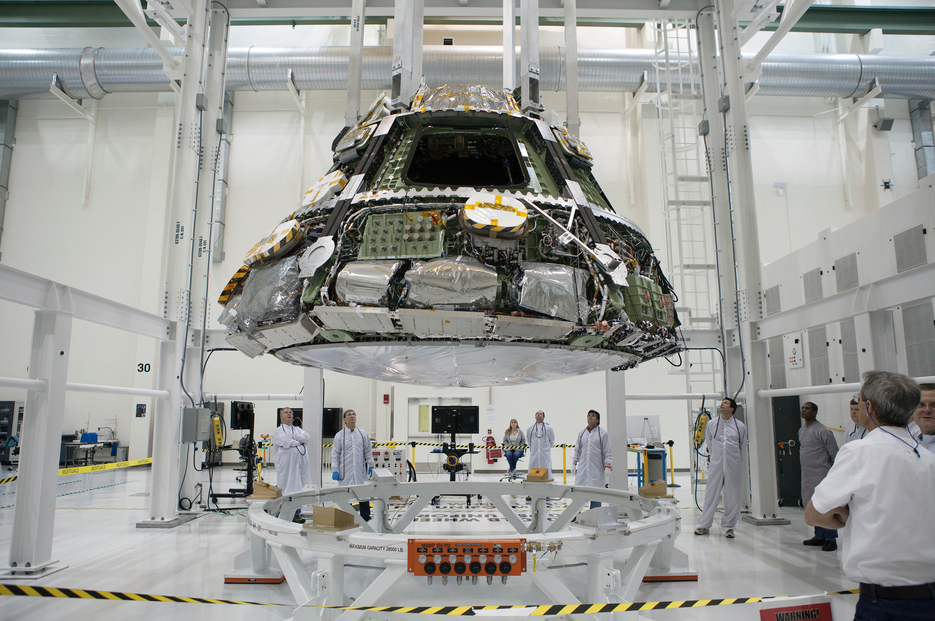
At the Operations and Checkout Building at NASA's Kennedy Space Center, the Orion crew module and heat shield are being moved into position for the mating operation. The heat shield will be tested on Orion's first flight in December, Exploration Flight Test-1 (EFT-1), an uncrewed flight that will put to the test the spacecraft that will send astronauts to an asteroid and eventually Mars on future missions. EFT-1 will launch an uncrewed Orion capsule 3,600 miles into space for a four-hour mission to test several of its most critical systems. After making two orbits, Orion will return to Earth at almost 20,000 miles per hour and endure temperatures near 4,000 degrees Fahrenheit, before its parachutes slow it down for a landing in the Pacific Ocean. Image Courtesy Lockheed Martin
[SatNews] The temperatures are extreme—reaching 4,000 degrees Fahrenheit (2200 C) during a scorching re-entry heating...
A milestone was met when technicians at the Kennedy Space Center (KSC) in Florida attached the world’s largest heat shield to a pathfinding version of NASA’s Orion crew capsule. This put the project closer to the timeline of the first unmanned test flight later in the on a crucial mission dubbed Exploration Flight Test-1 (EFT-1).
The heat shield measures 16.5 feet (5 m) in diameter. Lockheed Martin and NASA technicians mated the heat shield to the bottom of the capsule during assembly work inside the Operations and Checkout High Bay facility at KSC.
The Orion EFT-1 un-crewed test flight will examine the effectiveness of the heat shield in protecting the vehicle as well as human astronauts in the future. The temperatures are extreme—reaching 4,000 degrees Fahrenheit (2200 C) during a scorching re-entry heating in which three parachutes will open to slow the speed for a splashdown in the Pacific Ocean.
Once everything checks out the spacecraft will carry America’s astronauts on voyages venturing farther into deep space than ever before past the Moon to asteroids, Mars and more.

